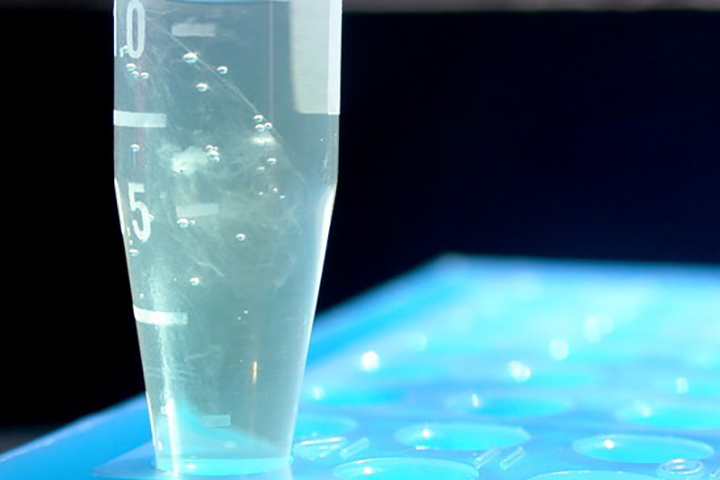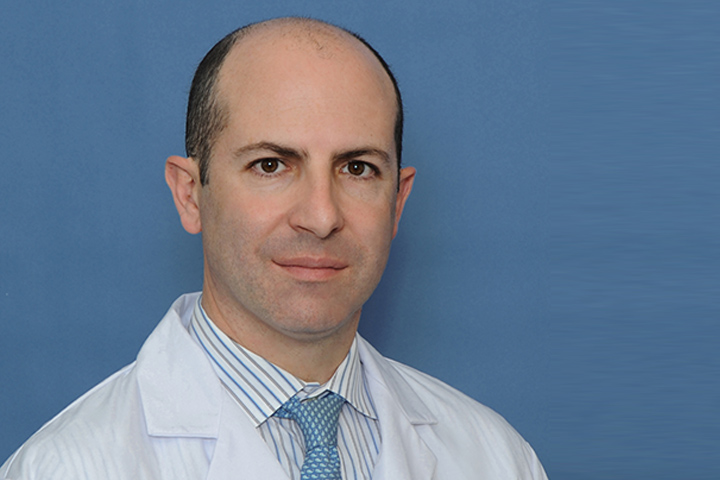Exploiting DNA Mutations For Pancreatic Cancer Treatment

Targeted therapy has improved the lives of many cancer patients.
Of particular interest are targeted therapies called PARP inhibitors, which shut down a DNA repair enzyme called poly (ADP-ribose) polymerase or PARP. This class of drugs has changed the treatment landscape for a select group of breast and ovarian cancer patients, and some pancreatic cancer patients. But the drugs only work for a while. Eventually the cancer finds a way to outwit the PARP inhibition and begin its process of uncontrolled cell division yet again.
A team of researchers from the Dana-Farber Cancer Institute (Boston, Massachusetts) is trying to figure out how to outsmart pancreatic cancer by making PARP inhibition more effective for these patients. The Pancreatic Cancer Collective’s “New Therapies Challenge” Grant is giving them a boost.
Learning From Each Other
The two physician-scientists co-leading the project are Alan D’Andrea, M.D.—who directs both the Susan F. Smith Center for Women’s Cancers and the Center for DNA Damage and Repair at Dana-Farber and is internationally known for his research in DNA damage and DNA repair—and Dana-Farber gastrointestinal oncologist James Cleary, M.D., Ph.D.
In late 2018, the team was awarded the grant for their project proposal “Exploiting DNA-Repair Gene Mutations in Pancreatic Cancer.” Their hope is to add to the knowledge of how PARP inhibitors may be used in pancreatic cancer treatment for those patients with certain genetic mutations. About 20 percent of pancreatic cancer patients have mutations in genes involved in double-strand DNA damage repair, including BRCA1, BRCA2, PALB2, ATM, and CHEK2. That suggests that PARP inhibition may be successful for this group.
But eventually, virtually all develop resistance to treatment, based on prior studies. The team wants to find a way to overcome this resistance and find biomarkers that can show what patient population may benefit most from this type of targeted treatment.
Pancreatic cancer studies of PARP inhibition have not yet shown the dramatic results seen in breast and ovarian cancer, but there are intriguing findings. For example, treatment with the PARP inhibitor olaparib significantly reduced the risk of disease progression or death from metastatic pancreatic cancer, according to findings from the recently completed, international, phase III POLO (Pancreatic cancer OLaparib Ongoing) trial, published in the New England Journal of Medicine in July 2019. Progression-free survival was 7.4 months on the olaparib arm and 3.8 months on the placebo arm. From six months onwards, more than twice the proportion of patients, all of whom had inherited BRCA1 or 2 mutations, on the olaparib arm were progression-free. In December 2019, based on the POLO results, olaparib was approved by the FDA for maintenance treatment of metastatic pancreatic cancer in people with a BRCA1 or BRCA2 mutation whose disease has not progressed after completing first-line platinum-based chemotherapy. This is the only PARP inhibitor approved for these patients.
For the Dana-Farber team, it was these findings, among others, that spurred interest in applying for the Challenge Grant. “Let’s be clear, pancreatic cancer patients need better, more effective treatments, so when you see something that may have a chance to improve the lives of these patients you want to explore it more,” says Cleary. “The way to do that is through this kind of collaborative research.”
He says the past year has been incredibly busy and he’s still slightly incredulous that everything has come together so relatively quickly. “It’s been a phenomenal year, and we couldn’t have done it without the grant,” Cleary says. “We assembled a great team. I’m still kind of floored that I’m working with Alan (D’Andrea) since he’s the one who called me up and said he wanted to work on a grant with me. He’s a very accomplished senior scientist working in DNA repair and ovarian cancer. I’m a junior scientist working in pancreatic cancer. But we both have an interest in DNA repair mechanisms.
“He says we are learning a lot from each other, but let’s be real, I’m learning a lot from him.”
Another Pathway to Take Advantage of DNA Mutations
Cancer is a very formidable foe. Healthy human cells can often repair DNA damage by relying on hordes of proteins to fix the problem. But if enough damage occurs and proteins can’t do their job, the cell dies. Malignant cells like pancreatic cancer cells can also find ways to thrive with DNA damage even with an onslaught of chemotherapy, radiation therapy, or targeted therapy. For years, researchers have known that some pathways may not be working properly in patients because of genetic mutation, such as BRCA1 or 2, which repair double-stranded DNA breaks. Pancreatic cancer patients can carry BRCA1 or 2 mutations, as well as mutations in PALB2, ATM, and CHEK2 pathways.
“PARP inhibitors can be very effective in some cancers because if the BRCA pathway is compromised, the cancer cell then becomes overly reliant on the PARP proteins to repair DNA damage,” Cleary explains. “The idea behind PARP is if BRCA is already shut down, shut down the PARP pathway and that should be enough to finish off the cell.”
But the problem is cancer cells try to find another way, basically another pathway that will repair the damage when the PARP pathway is inhibited. “With a tough-to-treat cancer like pancreatic cancer, and others, you can inhibit the PARP pathway, which is great, but it seems very clear that you need to shut down another pathway, too,” Cleary says. “When that happens there isn’t any repair pathway in place to fix the cell, and the cell will die.”
The next problem is that patients treated with targeted therapies (as well as other types of chemotherapy) often develop resistance to the drugs. The resistance takes one of two forms: intrinsic (de novo) resistance—meaning a lack of response to a treatment—or acquired resistance—meaning that a patient may respond for a while but eventually the treatment stops working. “What we need to do is to find a way to reverse this resistance,” Cleary says.
Early Work Shows Promise
Cleary admits it is a formidable task but one he is extremely excited about. “There has been some trial and error in the past year, but we are clearly on to something,” he says. “The team initially focused on a large panel of organoids, but the organoids derived from cancers with BRCA1 and 2 and PALB2 mutations were not growing, so we needed to figure out how to get around that,” Cleary explains.
Because the team had a structure in place, they started to use cell lines (cancerous cells in a petri dish) to figure out what drug combination might be best.
In their abstract, the researchers say that studies on the molecular mechanism of PARP resistance show that almost all PARP inhibitor-resistant tumors hyperactivate the ATR/CHK1 pathway. They then hypothesized that targeting the ATR/CHK1 pathway will overcome PARP inhibitor resistance. Based on their preclinical work, the team will be opening a phase II clinical trial called POLAR (Pancreatic cancer OLaparib and ATR inhibitor trial) soon that will combine the PARP inhibitor olaparib with an ATR inhibitor. “Alan was instrumental with his expertise on how we should combine drugs in pancreas cell lines, and without his expertise we wouldn’t know which combination might be best,” Cleary says, adding the hope is the POLAR trial will build off the success of the POLO study.
The team is looking forward to what’s next. “First, we couldn’t have done any of this without the grant, and the way the grant is structured is incredible,” Cleary says. “It’s a real privilege to care for cancer patients, and there is no doubt that they are the bravest people I have ever met.
“Back in 2005, I remember there wasn’t much we could do for patients with advanced melanoma, but now overall survival has greatly improved. And there is no reason why we can’t do the same thing for patients with pancreatic cancer. Absolutely no reason.”






